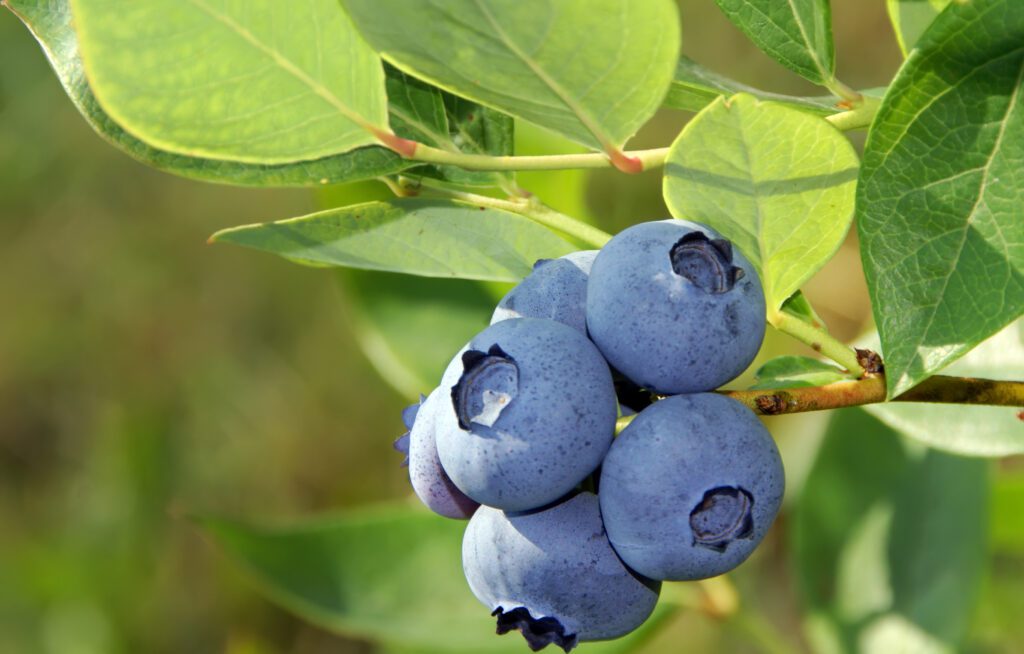by RYAN MILEJCZAK
Sponsored by Farm Credit of Central Florida
Florida is an agricultural powerhouse, growing a wide range of crops. One crop that is currently in its harvest prime is the blueberry.
While blueberry production in the U.S. got its start in the early 1900s, it wasn’t until the 1950s that Florida blueberry production would really pick up. This was thanks to the work of Professor Ralph Sharpe, who helped develop blueberry varieties that would thrive in our state.
The past twenty years have seen blueberry cultivation in Florida increasing both due to increased demand for blueberries and because blueberries offer an attractive alternative for struggling citrus growers. Today, there are an estimated 5,760 acres of blueberries cultivated across Florida, and the state produces about 20 million pounds per year.
While Florida isn’t a giant in blueberry production like Washington and Oregon are, it’s still a top contender, ranking eighth in production. Most notably, Florida blueberries are the first in the country to ripen, giving the state a competitive advantage.
While the past few years have seen a number of struggles for growers, including hurricanes and competition from Mexico, the industry has remained strong, and growers are optimistic. A Florida Blueberry Growers Association poll found that, of 61 growers surveyed, 31% expected to be larger within the next three to five years, with 66% expecting to stay the same size, and only 3% expecting to be smaller or uncertain. This indicates a strong amount of optimism among growers.
The most recent numbers for 2023 show that 22.3 million of blueberries were produced in Florida that season. This represents a value of over $75 million for the Florida economy. Production is primarily centered in Alachua, Marion, Putnam, Sumer, and Lake counties, with blueberries also grown in Polk, Orange, Pasco, Hardee, Manatee, Sarasota, Levy, Hernando, and Hillsborough counties.
Most of the blueberry varieties grown in Florida come from the UF/IFAS Blueberry Breeding Program, including popular choices like Optimus and Sentinel. For 2024, growers surveyed stated that the highest yielding varieties were Farthing, Arcadia, and Emerald, while the most profitable were Farthing, Sentinel, and Arcadia.
Sentinel is one of the most recent varieties from UF/IFAS that’s seen success. First released in 2020, it boasts early yields, disease resistance, and suitability for machine harvesting, which is becoming increasingly popular. Other recent varieties include 2022’s Albus and 2023’s FL19-006, but these have yet to see significant planting.
The largest disease faced by growers is by far rust, affecting about a third of all farms surveyed. The story is similar for pests, where chilli thrips were present in more than 75% of farms surveyed, and 91% of farms in the South-Central region. Other significant diseases include algal stem blotch, anthracnose fruit rot, Phytophthora, and Ralstonia, while the only other significant pests were gall midges and mites.
In Florida, blueberries are generally planted between mid-December and mid-February, with the blueberry season occurring from mid-March to early May.
This past year has seen unusually cold temperatures, which has delayed production somewhat but tends to produce sweeter berries. While official numbers for the most current season won’t be available for some time, overall expectations seem to be that production will be similar to last year.
Despite challenges from weather, pests, and competition, Florida’s blueberry industry remains resilient. As UF/IFAS continues developing improved cultivars and growers refine their practices, Florida’s blueberry sector is poised to sustain its role as a key contributor to the state’s agricultural output.

